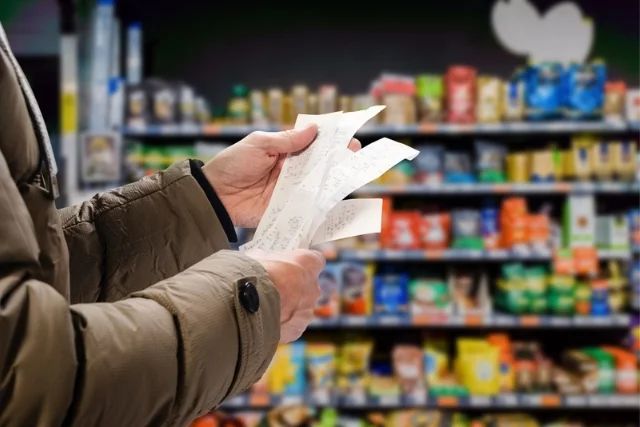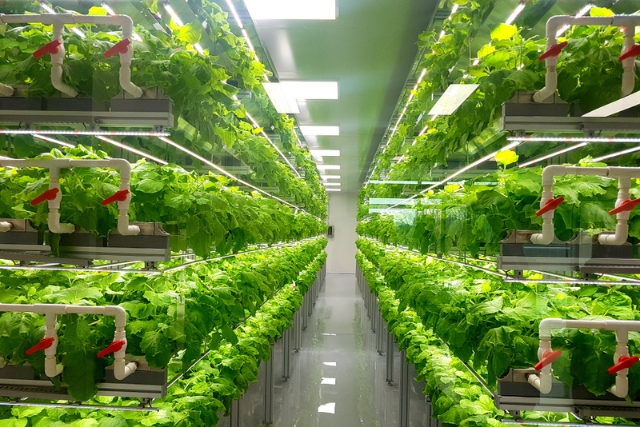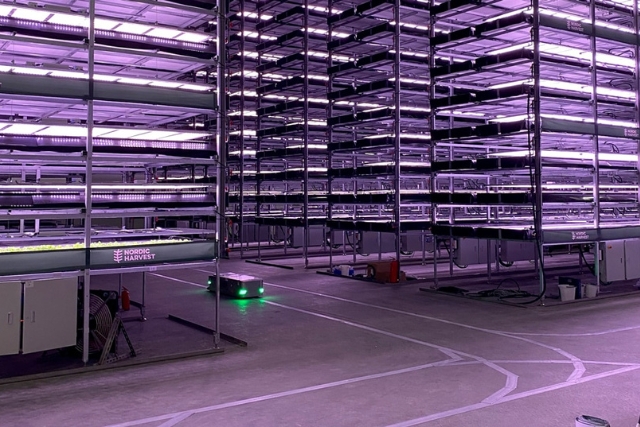
In previous articles, I’ve looked into what vertical farming is and explained how utilising it as a sustainable food production tool can benefit your business. However, with food security a growing issue in the UK and globally, I thought I’d take the time to explore the ways in which vertical farming can be used to tackle rising food costs, making food more accessible and affordable for all.
So, in this article, I’ll be giving a quick recap of what precisely vertical farming is before looking into what makes vertical farming a potential solution to food insecurity with a focus on adaptability, sustainability and energy efficiency.
What is Vertical Farming?
There’s no strict definition of what a vertical farm is, but usually, they consist of shallow trays stacked within a larger structure, illuminated by an LED lighting system at every level. These buildings don’t rely on external light, with some even being constructed under major metropolises across the UK.
As they’re entirely encapsulated within a man-made structure, these farms must be self-sustainable in terms of water, light, nutrients and, where appropriate, pollinators. Such hurdles are simpler to overcome with modern urban engineering techniques, as well as the advent of smart sensors to monitor humidity, lighting and oxygen levels.
Vertical Farming and Food Scarcity
The UK’s over-reliance on imported food has been highlighted recently as a result of significant shifts in the global geopolitical scene. The International Trade Administration estimates that around 46% of all food consumed within the UK is imported, while 2022’s food industry raw material imports increased by 30% from the previous year.
Excessive dependence on imported food can result in increased risk and price volatility while also contributing significant environmental damage. Investing in domestic food production, such as vertical farming, then, could go some way to resolving these challenges.

How Vertical Farming Can Aid Food Security
There are several crucial ways in which vertical farming can be used to tackle rising food costs, the first and foremost being its efficiency. Vertical farming allows for a more rapid and controlled production of food that isn’t dependent on season or climate in the same way traditional outdoor farming might be. Research conducted in collaboration with the University of Lancaster found that a single acre of indoor, vertical farming can if properly managed, yield an equivalent output to between 10-20 acres of conventional agricultural land.
It’s not only in output that vertical farming is more efficient, either. Nordic Harvest, a Danish start-up, are currently developing Europe’s biggest vertical farm in a 75,000-square-foot facility in Copenhagen, with the aim of pioneering a new, more efficient form of agriculture. As referenced in the article above, Nordic Harvest argues that modern, vertical farming techniques use 250 times less water and space than traditional farming.
At the heart of their ethos is the embracing and optimisation of state-of-the-art technology. State-of-the-art hydroponics systems, as well as smart software and autonomous robotics, allow careful monitoring and control to be exercised by managers around the clock, ensuring continuous efficiency. This optimisation of space and resources could see food costs decrease, helping to improve food security.

Above: Nordic Harvest Vertical Farm, Source: Atlas of the Future
Innovation is taking place in the UK, too, with British company Fischer Farms due to start trial production very soon, following its £33m investment In Easton, near Norwich. This forms part of a £1bn planned investment in vertical farming that will see crops grown in a fully-controlled, bio-secure environment, much like Nordic Harvest.
The strategy would begin with a range of leafy-based crops. Then, as the project develops, seasonal fruit such as strawberries and blueberries may be grown. The ultimate aim is to be able to produce sustenance crops like soya and wheat in vertical farms, which could see everyday food essentials like bread and pasta decrease in price.
The focus on these plants will help to eliminate expensive transit costs for foodstuffs like leafy greens and berries that perish rapidly. Not only could this bring down the costs of these items, but with plans to enable roof-mounted solar panels, it could spell a green solution to the food price crisis.
The Environmental Impact
In the long run, food scarcity and, therefore, affordability are intrinsically linked with climate change. Research shows that as the global temperature rises, certain areas of the planet will become unable to sustain crops or livestock, and meteorological behaviour will become less predictable, making agriculture more difficult. Due to the law of supply and demand, food costs will inevitably rise as a result of this.
In a direct sense, vertical farming can present a solution to this, as it doesn’t depend on traditional arable land or weather. The controlled nature of indoor agriculture means that it can be conducted anywhere, irrespective of climate, making it an effective countermeasure to food scarcity caused by climate change.
However, on a more proactive and positive note, by shifting to a vertical farming structure, farmers and food production companies can reduce the impacts of agriculture on the climate. Currently, the agricultural sector contributes around 10% of all greenhouse gases in the U.K., making it one of the most pollutive in the country.
The close monitoring and emission control offered by vertical farming allows managers to operate their projects to much tighter criteria. Not only does this reduce carbon emissions, but it can be utilised to prevent the pollution of groundwater, too.
In addition, the fact that vertical farms can theoretically be set up and run anywhere allows for the shorting of supply chains. Not only will this reduce carbon emissions and pollutants from the transit of food from farm to table, but it will also lower production expenditure, representing another way in which vertical farming can tackle rising food costs.
Let Me Help You Maximise the Benefits of Vertical Farming
My experience in the food industry is extensive, spanning over 25 years. Having specialised in b2b food manufacturing consultancy, my background includes senior-level international marketing, strategy and business development across EMEA and throughout the world.
My in-depth understanding of the processing, handling and packing requirements of each sub-sector within the food and beverage industry, combined with experience in online and offline global marketing, makes me an excellent choice to support you with your push into vertical farming.
For more information on how I can help your business, take a look at the Food & Beverage section of my website, or get in touch for a more detailed conversation.


